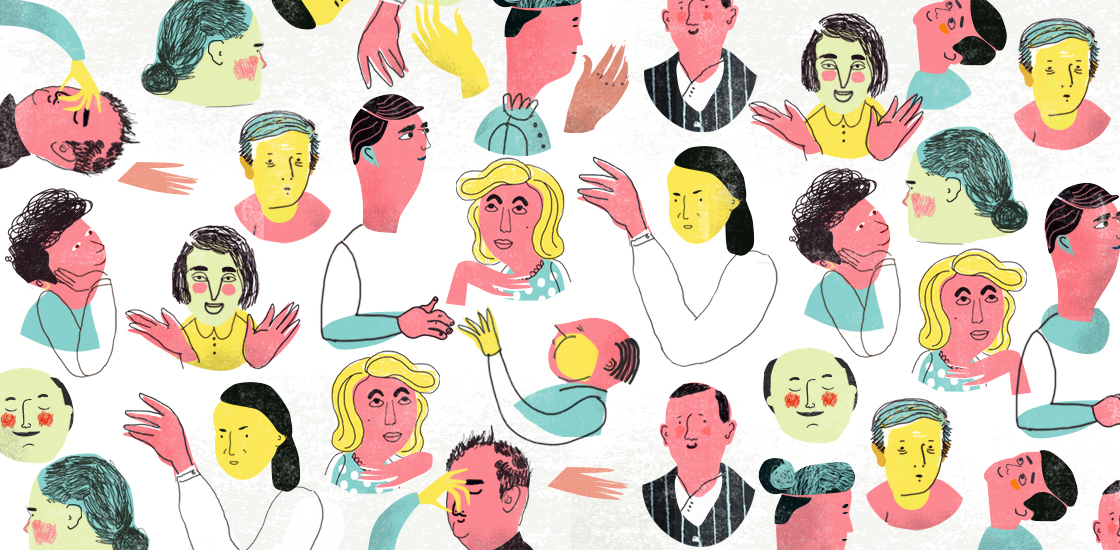New method aims to quantify ‘camouflaging’ in autism
A combination of multiple diagnostic tests may gauge the extent to which adults with autism attempt to blend in.

A combination of multiple diagnostic tests may gauge the extent to which adults with autism mimic the behavior of people not on the spectrum1. Both sexes engage in such ‘camouflaging,’ but women do so more than men, the study found.
“If you have a range of autism characteristics inside, but you don’t show it outside by your external behavior, that can be defined as showing camouflaging,” says lead researcher Meng-Chuan Lai, assistant professor of child and adolescent psychiatry at the University of Toronto.
In the new study, published 29 November in Autism, researchers combined several diagnostic tests to quantify the chasm between how an individual acts and her true inclinations and abilities.
Camouflaging may help people with autism maintain jobs and relationships, but many of them say it takes an emotional toll. The new work may help scientists better understand the behavior’s fallout.
“Camouflaging seems to be something that a lot of autistic people feel they’re doing a lot of the time, but nobody had really gone about finding a way to actually measure it,” says William Mandy, senior lecturer in clinical psychology at University College London. Mandy was not involved in this study, but is collaborating with Lai on another study of the behavior. “This is an interesting start on what is going to be a big topic, which is mapping the costs and benefits of camouflaging,” Mandy says.
Inside out:
While conducting a brain imaging study published in 2013, Lai and his team noticed that women with autism often rated themselves as having more autism features than their diagnostic assessment reflected2. In the new work, the team tried to measure this discrepancy.
The researchers rated autism features in the same group of 30 men and 30 women, using the Autism Diagnostic Observation Schedule (ADOS), a clinician-administered test for autism.
They then asked the participants to rate their own autism features using the Autism Quotient (AQ), a 50-item questionnaire. They also used the Reading the Mind in the Eyes Test (RMET), which assesses a key social skill: the ability to infer emotion from another person’s eyes.
The researchers standardized the three measures and then subtracted the ADOS score from that for either the AQ or the RMET. They then combined the two subtracted results into a single measure to represent the ability to camouflage, as reflected by an artificially low score on the ADOS.
As a group, women with autism have higher camouflaging scores than men, the researchers found. This finding meshes with anecdotal reports that women feel pressure to fit in and try to do so by imitating socially successful peers. This may also contribute to the gender bias in autism — that is, more women have autism than the reported sex ratio indicates because many women with the condition fly under the diagnostic radar.
On an individual level, however, many men show signs of camouflaging, and some of the men score higher than some of the women.
“Defined our way, it’s not a female-specific phenotype,” Lai says. “It’s actually in everyone who is on the spectrum.”
Emotional fallout:
The degree of camouflaging does not track with intelligence. But all of the participants have intelligence quotients of average or above. “It will be interesting to see how these findings generalize more broadly across the autism spectrum,” Mandy says.
The researchers also examined whether camouflaging scores track with certain cognitive, perceptual and emotional traits. They found that women who have higher camouflaging scores perform better on a task that measures the ability to detect and respond to visual cues.
A lifetime of camouflaging may make women more perceptive, leading to better performance on the task. Women who are naturally more observant may also be better at camouflaging, says Lai.
The researchers found that in men, higher camouflaging scores are tied to a greater incidence of depression. The team saw no association between camouflaging and anxiety, however, despite anecdotal reports from people on the spectrum. “I’ve literally had people say they’ve had to lie in the fetal position in a dark room after camouflaging,” Mandy says. Lai says the adults in the study may have become used to the stress of camouflaging over the years.
The next steps, Lai says, are to use data from behavioral tests to try to detect signs of camouflaging, and to ask participants directly whether they engage in camouflaging behavior.
References:
Recommended reading

New organoid atlas unveils four neurodevelopmental signatures
Explore more from The Transmitter
Snoozing dragons stir up ancient evidence of sleep’s dual nature

The Transmitter’s most-read neuroscience book excerpts of 2025


